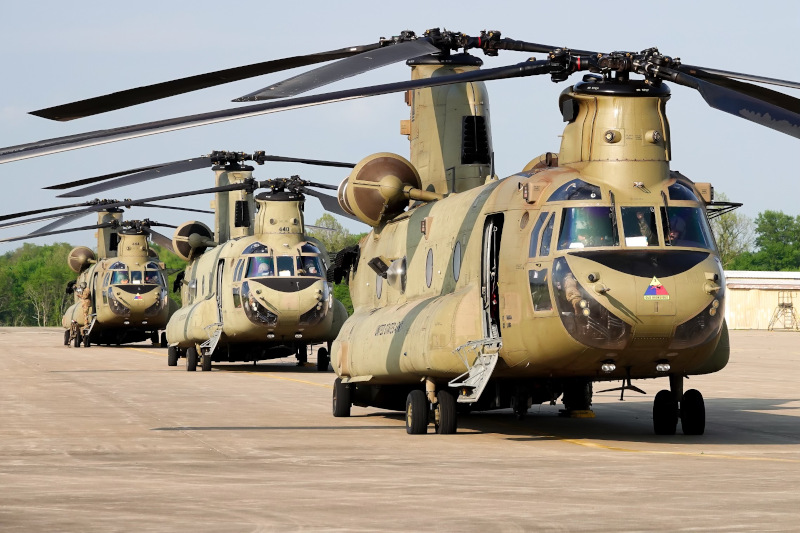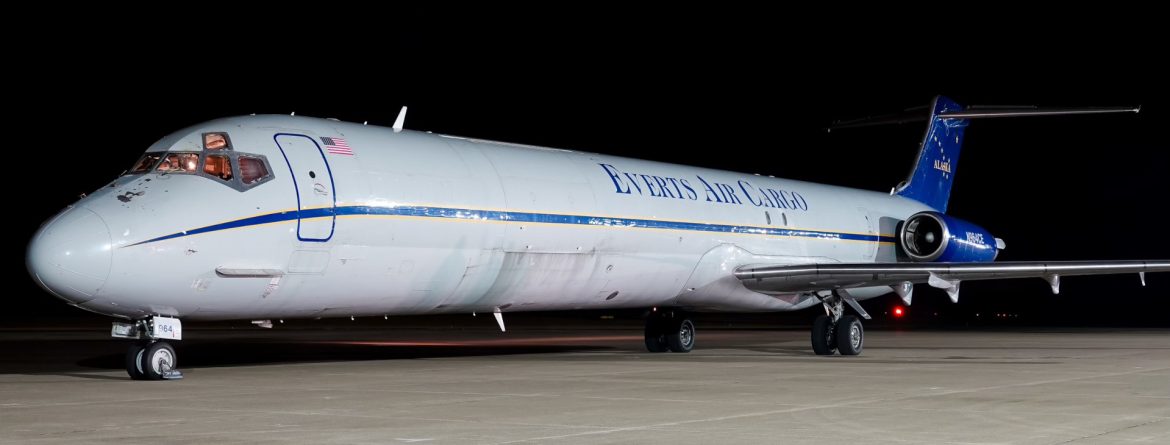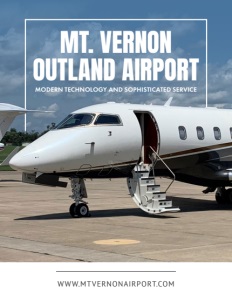Mt. Vernon Outland Airport
Modern technology and sophisticated service
Planning for sustainable aviation
The Mt. Vernon Outland Airport (MVN) in Jefferson County, Illinois, a dynamic and growing general aviation airport, located three miles east of the city of Mt. Vernon, began as a 60-acre grass landing field in the 1930s, founded by three local aviators, Miles Talbot, Harry Ford, and Earl Outland, for whom it was named. In 1955, the Mt. Vernon Airport Authority was established which, since that time, has been responsible for the airport’s maintenance, development, and growth.
Today, in addition to its use by many local corporate, business, and private aircraft owners, MVN has become a major cross-country fuel stop destination, due to several desirable and complementary factors: its 6,500 by 150 ft., asphalt runway with Instrument Landing System (ILS) and Area Navigation (RNAV) approaches on either end; its FBO, SRT Aviation, which is one of only a few FAA-certificated repair stations in that part of the state; its enhanced safety and security systems; and its many amenities, such as pilot supplies, a crew lounge, a 200-seat restaurant (the Bonnie Café), and more.
Mount Vernon Outland Airport used to have commercial service: it was served by Ozark Airlines for 18 years — up until 1980 — and later by other commuter airlines. And that is why it has a long, commercial-grade runway, supported by advanced technology and customer-focused amenities.
Infrastructure is key
“We’re very blessed with infrastructure,” says Airport Director, Chris Collins. “We have a full commercial runway and about ten acres of concrete ramp that’s stressed for aircraft more than 250,000 pounds. The largest narrowbody airliner can operate here.”
And because it needed to be Part 139-certified by the FAA to support its former commercial aviation sector, Mount Vernon Outland Airport was required to meet strict safety and emergency response benchmarks. That is the reason for its perimeter fencing; its upgraded signs, lights, and markings; its superior aircraft rescue and firefighting services; its snow and ice control operations; and its aviation fueling safety protocols, among other FAA-mandated structures, procedures, and processes.
With all that infrastructure in place, it’s hard to believe that MVN hasn’t had a commercial carrier for the last 25 years — since 1999, when the airport’s Essential Air Service (EAS) subsidy was withdrawn, rendering commercial airline activity unprofitable for its corporate owners. (EAS is a U.S. government program enacted to guarantee that small communities in the United States, which had been served by certificated airlines before deregulation in 1978, maintain commercial service. It aims to sustain a minimal level of scheduled air service to these communities that otherwise would not be profitable.) While EAS subsidies can be withdrawn for several reasons, very often it is because a particular airport is deemed too close to other medium or large hubs, which customers can just as easily utilize.
“My guess is that the EAS subsidy was cut because we’re too close to St. Louis Lambert International and Evansville (Indiana) Regional Airports.,” Collins offers.

Holding on to its certification
What makes Mount Vernon Outland Airport somewhat unique, though, for an airport with no current commercial operations, is that it has chosen to retain its Part-139 certification, incurring its increased costs, while simultaneously hoping and planning for a resurgence of commercial activity that will accrue future benefits from its current investments.
“If we surrender the 139 certificate, it’s going to be more difficult to get it back because of all of the renewed oversight and inspections and things like that,” Collins explains. “So you don’t want to surrender it, and in Mt. Vernon’s case, if there’s a future technology, for example, that can put you back on the map, if you don’t have the certification, you’re left out in the cold. We want to go right back into service.”
One of the emerging technologies that MVN has its eye on is EV (electric) aircraft, which, according to Collins, has the potential to operate economically and would be a good fit for Mt. Vernon. Collins further reports that, recently, Cape Air, the largest independent regional airline in the U.S., put down a large deposit on 75 nine-seat EV aircraft made by Eviation Aircraft, in a bid to step into the sustainable era of aviation.
“It has a range to go to Chicago — 225 miles — which would be a prize for us,” Collins shares. “And there’s a lot of technology that exceeds that nine seat threshold and that 225 mile range from this airport. So, we want a seat at the table when that happens. That’s one reason why we keep our 139 certificate.”
Capital investments
Mount Vernon Outland Airport continues to spend the bulk of its yearly capital infrastructure dollars on meeting the requirements for its 139, believing that in doing so, it will also attract new GA customers and more aviation-based businesses. “At the moment, there’s $2.7 million for an upgrade to the airfield lighting,” Collins begins. “We’re replacing 1960s-era incandescent technology with LEDs. We’re relighting our two runways (5/23, which measures 6,498 X 150 ft., and 15/33, which measures 3,149 by 100 ft.) and the parallel taxiway systems for both runways. That project has been in the works for almost four years. The contractors on the ground will be here through the rest of the summer, all the way to October.”
Another large infrastructure project is the construction of a $2 million facility in the airport’s Innovation Park area, called Joint Base Jefferson, which will house both aircraft and crews from Air Evac Lifeteam 11 and Air Evac Lifeteam 172. (Air Evac Lifeteam is a leading provider of emergent air medical transportation services, operating more than 150 helicopter air ambulances across 18 states. Each crew consists of a pilot, a flight nurse, and a flight paramedic, on duty seven days a week.) Air Evac Lifeteam 11 has been operating at MVN since 2000 and conducts four to five flights daily, responding to the scene of a medical emergency or transporting patients between medical facilities. Air Evac 172 is equipped with an Airbus EC 135, a larger twin-engine helicopter, capable of flying in nearly all weather conditions, and serves destinations such as Indianapolis, Louisville, and Memphis. “That project’s almost done,” Collins notes. “We’ll finish in late July,”
Then there’s the FBO modernization project. “This started as an FBO upgrade,” says Collins. “On a typical day, there can be several aircraft that land here to pick up fuel and then depart. One recent week saw 72 people passing through there, just stopping for fuel and then going on. They’re coming into a facility, though, that is very outdated. So, we saw the need for a facelift. But once we got started, we ended up taking it the full gamut: We have a new sales counter, high-end, tile flooring throughout the building, and new lounges – all to make the customer experience more welcoming.”
“We designed a new parking lot with modern, up-to-date entrances with canopies on both the air side and the parking lot side. We spent about a quarter of a million dollars and we’re almost done with that one, but it was worth it. When you have Fortune 500 jets sitting out there, you want to make sure you have your best foot forward.”
A value-added aspect of the FBO modernization project recognizes MVN’s active planning for the eventual landing of an EV aircraft carrier. “We have the conduit in the ground for an EV charger for an airplane and a couple of EV chargers for cars,” Collins reveals. “We haven’t bought the chargers, there’s little market, and nobody is helping with the funding, but, at least, the conduits are in the ground because we’re planning for sustainability. We’re also in development for a solar project, not to sell power, but to take a bite out of some of our big power bills here at the airport.” Mount Vernon Outland Airport’s potential solar power initiatives include installing solar panels on two hangar buildings, and the possible leasing of some of the airport’s unused fields to solar developers.
Mount Vernon Outland Airport is replacing its ARFF (Aircraft Rescue and Firefighting) truck, which is used to respond to aircraft accidents both at the airport and elsewhere. “The fire truck that serves the airport, at the moment, is a 2005-year model,” says Collins. “So, we’re knocking on the window of that 20-year life and we’ve been working very hard to replace our aging truck. We want to be proactive, not reactive. Our 24/7 ARFF station, manned by our city fire department, serves the entire eastern side of our town, plus the airport. It is manned by very qualified people and has the latest technology on the firefighting end and the paramedic side.”
Regarding the airport’s parking lot for local automotive traffic, Collins reports that he just signed the contracts for an upgrade to its 1975-era parking lot at the main terminal as well as its entry roads. “That project is over a million dollars, and it was funded by our state program called Rebuild Illinois. That project will get underway in September. Our new parking lot will have over a hundred spots, an entry road coming in, a scenic area with a lakeshore shelter (we have a big lake on our property) as well as an entrance road going into the new southwest development of Innovation Park.”
“Another project that’s probably two years away is a new snow removal equipment building or maintenance building,” Collins adds. “That is going to be located just west of Runway 33 on the perimeter access road.” Currently, the snow removal building is located in Innovation Park, which Mount Vernon Outland Airport is developing for new aviation businesses that need access to both the airport’s runways and the highway. Luckily, Mount Vernon Outland Airport is strategically located at the intersection of Interstates 57 and 64, making it easily accessible to major markets such as Memphis, Indianapolis, Kansas City, and Chicago.

Mount Vernon Outland Airport is a cargo transporter
The airport is also located at the nexus of five Class 1 railroads – three that come through Mt. Vernon and two that just touch the edge of it. “The Norfolk Southern Railroad passes just to our south and the Evansville & Western, a short line railroad, joins the southern just south of Runway 05,” says Collins.
“Having a railroad just across the highway and being at the intersection of two interstates — we’re hoping that someday we can be some sort of a transload facility, mixing our cargo capabilities. We do a lot of just-in-time cargo shipments into and out of the airport. There are five automotive manufacturers within 30 miles of the airport and shipping products by airplane is not something they want to do. But every once in a while, there’s a just-in-time situation and they have to do it.”
“They’re very happy that they have a willing partner in the airport to help them. When a cargo plane is inbound, everyone is pulled off their assignments. That airplane is our priority until it’s wheeled up and out of here. We’ve earned a good reputation for that in the last thirty-plus years or so. So, we do get offered a lot of cargo opportunities and we want to expand on that. It would be wonderful if we could attract a company that would be located here in our Innovation Park area.”
New hangars and flight training
Meanwhile, Mount Vernon Outland Airport is busy building new hangars and planning for more tenants at Innovation Park. One hangar has been built already. “We put that in a few years ago,” Collins says.
“Joint Base Jefferson is almost done and very soon, we will have one 120 by 120 site ready for development. And once the current maintenance building is demolished, and the new building is built, then Innovation Park hangars three and four sites will be ready. So, within two years, we will have three 120 by 120 sites available. Site number two will be shovel-ready; sites three and four will take a little bit of work but not a lot.”
Mt. Vernon Outland Airport is also going full steam ahead with flight training. “We have four aircraft -two Cessna 172 Skyhawks and two Aeroprakt A22’s” Collins states. “We have one full time instructor , three part time instructors, and about 20-25 students at any given time all operating under Part 61. Last year, we had nine solo experiences, three private pilots, two instrument ratings, and one commercial certificate earned here at the airport.”
Working with partners
It’s important to note that Mount Vernon Outland Airport works with many partners as it continues to upgrade and develop its infrastructure and its offerings. Among its allies are the Jefferson County Development Corporation, the Greater Egypt Regional Planning and Development Commission, Southern Illinois (SI) Now, the federal Economic Development Administration, an office of the U.S. Department of Commerce, and, of course, the State of Illinois, and the city of Mt. Vernon. “So, we’re plugged in with those partners, and, hopefully, there’ll be some synergy in developing grants and studies.”
As Mount Vernon Outland Airport looks ahead – “I like to look at five years,” notes Collins – he is quick to point out that even at its current level of operation, the airport is a significant player in the local economy with an annual impact of $40.2 million. “We’re very proud of that,” he admits. He also admits that he loves his job.
“No two days are the same,” he states. “And if you’re an aviation enthusiast at heart like I am, that’s exciting.”
AT A GLANCE
Mt. Vernon Outland Airport
WHAT: A general aviation airport with a Part 139 certification
WHERE: Jefferson County, Illinois
WEBSITE: www.mtvernonairport.com



